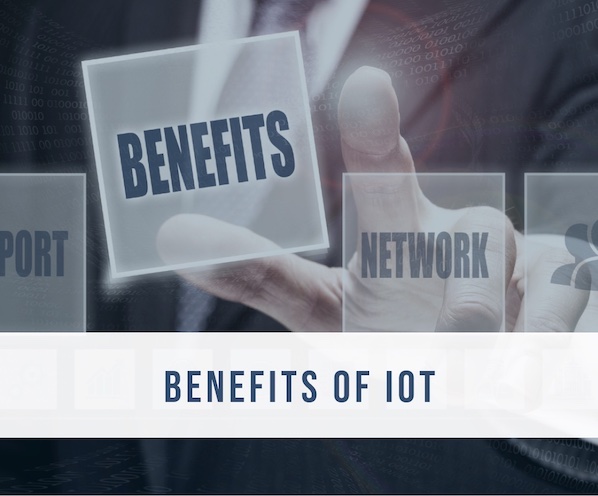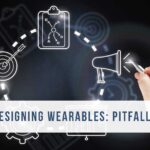
IoT is growing, but what are its benefits? For businesses, consumers, and society in general, how will this increased connectivity improve products and services?
Business Benefits
Here is how your business can benefit from IoT: It can both increase revenue and decrease costs, especially through better product development, increased efficiency, better-protected IP, and more stable revenue streams.
Better Product Development
IoT connectivity allows for better customer understanding, which is the key to retail success.
Rarely would a web developer release a website without analytics that tracks the site’s popularity, but this is precisely what developers of non-IoT products have done throughout history. IoT gives businesses the power to track customer usage of a product after it’s sold. Information that was previously cumbersome or impossible to measure is now easy to codify as reliable data. Coca-Cola, for instance, is already using IoT vending machines to learn which products are popular and optimize the placement of their machines.
As companies gain more real-time information on their customers’ desires, product development as a whole will improve from shorter, more direct feedback loops.
Increased Operational Efficiency
George Westerman, the director of MIT’s course “Internet of Things: Business Implications and Opportunities,” forecasts IoT will both lower operating costs and improve productivity.
In manufacturing, for instance, IoT devices can collect data on employees to improve management strategies and monitor machines to reduce overall downtime. Forward-thinking companies have already begun to realize these improvements. By shifting its production to an IoT manufacturing plant, motorcycle manufacturer Harley Davidson grew its overall profitability by over 3% in 2018. They now monitor the humidity and temperature of their painting center, automatically adjusting if the measurements report out-of-bounds results. Similarly, oil and gas giant Royal Dutch Shell turned a $87,000 investment into a return of over $1 million through an IoT maintenance and location-monitoring system in West Africa.
Better Protected IP
Historically, manufacturers ran the risk of competing with copycats. IoT products, however, are protected by their “cloud half.” Even if the physical version of a product is duplicated, the copy lacks access to the manufacturer’s cloud, including its IoT analytics and perhaps even the ability to run the product at all. This transforms many duplicates into fancy paperweights, better protecting the designer’s IP.
More Stable Revenue Streams
Continuous customer connections allow improved business models, which is literally how a company makes money.
Peloton, which sells what is essentially a stationary bicycle with a tablet attached, makes much of its money through content subscriptions. Users pay over $500 per year to access on-demand workout classes, providing the company with a recurring revenue stream of over one billion dollars. Additionally, if an average stationary bicycle costs $700 and an average tablet costs around $365, why is Peloton so popular when their cheapest bike costs more than $1400? Customers are clearly willing to pay for Peloton’s connectivity and classes–in fact, they’re willing to pay over and over.
IoT is having a profound impact on more than spin classes. The Harvard Business Review Has a whole list of ways that IoT creates new business models. One such profound impact is disintermediation: with IoT, a manufacturer can connect with consumers even if the product was purchased through a retailer. They can continually sell services direct-to-consumer, cutting out the middlemen and reaping higher profits.
Consumer Benefits
Consumers will see improvements from IoT as well, generally through increased convenience, greater satisfaction, improved products, and more services.
Increased Convenience due to Automation
For most consumers, “convenience” is the first benefit of an IoT home. IoT can automate chores, even fulfilling necessities that many forget to do, such as checking the expiry dates of food or medicine. It can also lead to more time savings through inter-connectivity: if your phone’s GPS senses that you’re leaving the gym and your heart rate monitor corroborates this information, wouldn’t you like the bath already filled at the proper temperature when you arrive home?
Better Energy Efficiency
Many customers want to save energy, but this goal can be difficult to achieve. With IoT, data from connected devices can provide insights to homeowners that allow for more energy efficiency and decreased utility bills.
Already, consumers who use a Nest thermostat have seen impressive results, saving more than 10% of the energy typically used for heating and cooling. Where they previously may have let the thermostat run on a timer, Nest users can now turn on the heat as they’re driving home, or even let the Nest’s intelligence take care of the planning.
Higher Quality Products
For some devices, increased connectivity has an improvement on the device itself. Starting in the 1990s, heavy equipment manufacturer Caterpillar began embedding connectivity in its equipment. Their products, used by industries such as agriculture, construction, and mining, allow their customers more information and better efficiency. Their IoT mining vehicles, for instance, increase productivity by over 20%.
For other products, the interactivity between devices creates significant gains with the internet of things engineering. Imagine the improvement to a diabetic’s overall health if their blood glucose monitor is connected to their phone to pass on blood sugar information to their healthcare provider. Several devices with these capabilities already exist. Coupled with knowledge of what food was consumed (through the previously mocked and increasingly successful smart fridge, for instance), this information could develop real-time insights into an individual’s blood sugar response.
Once purchased, most physical products simply degrade, but an IoT product could even improve over its life. Since manufacturers remain connected to IoT products, they can update the device’s software just as computer companies can upgrade an operating system. In 2014, car manufacturer Tesla discovered a bug that might cause their car to start fires. Instead of doing a standard recall, Tesla merely pushed a software update to their cars, allowing drivers to download the update at their convenience. In addition to saving themselves money on a recall, Tesla also saved its customers’ time.
More Personalized Products
With the more specific customer information that IoT provides, companies will be able to tailor their products more individually. Some consumers are already using a combination of computer vision and IoT technology to provide individual measurements for custom clothing. One company, MTailor, claims they’re even more accurate than a human tailor.
More Services in Total
Since it’s a clear example that consumers can understand, everyone is talking about smart homes. One category of smart home IoT implementation provides consumers with remote control of their devices. This both adds safety (no more wondering “did I leave the stove on?”) and has been proven to save energy.
IoT has been said to make way for “everything as a service.” Monitoring vital signs, for instance, has been common practice for professional athletes, and with the advent of consumer wearable devices, this service can become more accessible. Many companies already provide athletic tracking, but what about athletic optimization? When combined with biometrics, an IoT athletic suite could improve an individual’s fitness regimen. Imagine a treadmill synced with an Apple Watch that can access the Internet’s intelligence on marathon training. Users could simply select a date for their race and let their devices guide the rest of the training. This system could track runs that occur both indoors and outside, as well as provide real-time updates when a runner misses a training session. The suite could even provide moment-by-moment advice during training, such as, “Your heart rate is slightly lower than it should be. Run faster.”
Public Good
In addition to its benefits for buyers and sellers, IoT has significant implementations in the public sector as well. Many governments are already using IoT to decrease traffic congestion, with IoT improvements upcoming for safety, health, regulation, and the environment.
Less Traffic
Traffic is the bane of many commuters’ existence, but fortunately, even a single self-driving car has been shown to improve traffic congestion for everyone. And if all trains and buses were GPS-enabled, commuters would be able to update their travel plans in real-time. Some localities have already implemented this practice, seeing increased use of public transportation, which decreases traffic even further. As GPS and IoT connectivity decrease in price, expect more cities to follow along.
Safer Citizens
Public policy helps keep citizens safe, and IoT would help it be applied with more speed and granularity.
Mandatory smoke detectors, for instance, have been shown to decrease fire-related deaths. Many of them require human intervention to notify the authorities, but what if they simply notified the fire department directly? Firefighters could begin preparing a team while attempting to reach out to the homeowner’s cell phone. In cases of false alarm (such as smoke from cooking dinner), the smoke detector could follow up with the authorities to notify them it had been turned off.
Healthier Citizens
Many companies are already working on IoT applications to public health, and, in addition to the products, public health data can be incredibly valuable.
IoT thermometers already exist. If data from a large enough population were compiled and analyzed, public health experts could gain insights into the spread of diseases like the flu, leading to improved vaccination policies and best practices for interacting with the ill.
More Effective Regulation
By connecting to on-the-ground behaviors in real-time, IoT lets governments regulate previously un-measurable or unenforceable behavior.
For a police officer, firing their weapon is the most serious act. In Chicago, some citizens have been requesting policy changes to require documentation each time an officer draws their firearm. With IoT, this regulation could be monitored through an automated system, such as sensors on the holster and gun and a transmitter that notifies police dispatch. The IoT system’s objective documentation would make many citizens feel safer while faster communication would help police officers by requesting backup faster.
This sort of granular awareness and regulation could also be applied in all sorts of citizen-directed ways. For example, some societies are currently unable to monitor the carbon emissions of individual people. By combining IoT information from a person’s car, house, and business, however, a central repository could calculate each person’s specific carbon footprint. This could allow regulation to be applied on an individual level (such as “each person gets X amount of pollution) and this same strategy could be applied to other types of negative externalities.
A Greener Environment
IoT is forecasted to help save the environment. The term “SmartGrid,” for example, means an IoT-enabled public energy system, including the ability to track, monitor, and control energy use. IoT watering systems already save millions of gallons of water every year by preventing leaks and watering only in times of no rain. By one estimation, a U.S. SmartGrid would “cost billions, save trillions.”
Conclusion
IoT benefits exist not only for businesses and their models but also for consumers. There are still risks associated with IoT, including security issues. Even then, those issues continue to be addressed and solutions have emerged. Ultimately, IoT has a largely beneficial impact on businesses and consumers that will only continue to grow.




